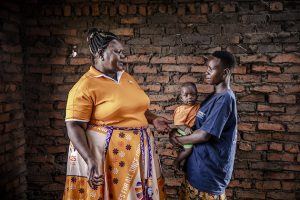MONTREAL, Sept. 29, 2022 (GLOBE NEWSWIRE) — Bombardier today introduced Toto Wolff as its worldwide brand ambassador. For many years, Toto has turned to Bombardier jets to quickly, efficiently and smoothly travel between business and motorsport engagements around the world. With this longstanding experience in hand, Toto will support Bombardier through a range of activities and touchpoints.
“Toto is a visionary leader and entrepreneur who embodies the spirit of innovation, excellence, performance and competitiveness that have all become synonymous with Bombardier business jets around the world," said ric Martel, President and CEO, Bombardier. "We are particularly proud that Toto's discerning eye and quality–driven mindset have led him to deepen his ties with Bombardier through this agreement. We look forward to showcasing our capabilities and continuing to promote the Bombardier brand around the world."
"As a full–range Bombardier customer for over 15 years starting with the Learjet and Challenger Series through to the Global 6000, I appreciate and admire the exceptional level of quality and ceaseless innovation Bombardier stands for," said Toto Wolff. "Bombardier shares my drive for high–performance, often facilitating it, and I'm looking forward to drawing on my experiences as I represent this fantastic brand around the world".
Toto will support Challenger and Global business jet products""including the latest, sustainably designed, Challenger 3500 super midsize jet, and the performance leading Global 8000 flagship aircraft""as well as innovative initiatives, such as the recently unveiled Bombardier's EcoJet Research Project. Toto will also serve to highlight Bombardier's expanding worldwide service center network, which recently celebrated significant growth milestones in Singapore and Melbourne, Australia, and is poised for further inaugurations this year alone in London, UK and Miami, Florida. More specifically, Toto will focus ambassadorial duties around the service network's turnkey refresh, refurbishment and upgrade offerings that are now available in more geographies, following facility openings and enhancements.
About Toto Wolff
Toto Wolff is Team Principal, CEO & co–owner of the Mercedes–AMG PETRONAS F1 Team. A former racing driver turned investor, Toto started his career by founding a tech–focused venture capital firm in Austria. He entered F1 with an ownership stake in the Williams F1 Team in 2009, before acquiring a 30% stake in the Mercedes–Benz works team in 2013. Toto has led the team, featuring the most successful F1 driver of all–time, Lewis Hamilton, to unprecedented heights, becoming the most successful sports team in the world based on consecutive world championships.
About Bombardier
Bombardier is a global leader in aviation, focused on designing, manufacturing, and servicing the world's most exceptional business jets. Bombardier's Challenger and Global aircraft families are renowned for their cutting–edge innovation, cabin design, performance, and reliability. Bombardier has a worldwide fleet of approximately 5,000 aircraft in service with a wide variety of multinational corporations, charter and fractional ownership providers, governments, and private individuals. Bombardier aircraft are also trusted around the world in special–mission roles.
Headquartered in Montral, Qubec, Bombardier operates aerostructure, assembly and completion facilities in Canada, the United States and Mexico. The company's robust customer support network includes facilities in strategic locations in the United States and Canada, as well as in the United Kingdom, Germany, France, Switzerland, Italy, Austria, the UAE, Singapore, China, and an Australian facility opening in 2022.
For corporate news and information, including Bombardier's Environmental, Social and Governance report, visit bombardier.com. Learn more about Bombardier's industry–leading products and customer service network at businessaircraft.bombardier.com. Follow us on Twitter @Bombardier.
Bombardier, Learjet, Challenger, Global and Global 8000 are registered or unregistered trademarks of Bombardier Inc. or its subsidiaries.
For Information
Mark Masluch
Senior Director, Communications
Bombardier
+1 514 855 7167
A photo accompanying this announcement is available at https://www.globenewswire.com/NewsRoom/AttachmentNg/13ccfb40–d1a3–440e–919e–655db79b4f68






